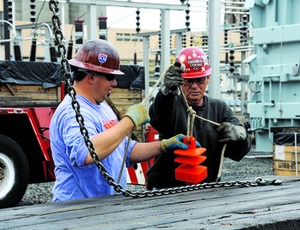Six months after the U.S. Occupational Safety and Health Administration began enforcing its crane and derrick standard, which mandates higher levels of safety precautions for hoisting operations on construction sites, employers and regulators say implementation of the landmark workplace-safety rule has been no easy task.

New qualification requirements for riggers and signalers are among the most questioned parts of the current crane rules, and employers say OSHA's definition of “qualified” is ambiguous. “I think that has caused a little bit of confusion,” acknowledges an OSHA spokesman, who asked not to be named. “We do have several letters of interpretation, and we are working on some FAQs.”
OSHA has issued workplace violations under the new rules, even though it is still actively training its own field personnel on how to interpret them. The agency is busy writing what it calls a “compliance directive,” a lengthy document that will teach field inspectors how to parse the rule when issuing citations. It expects to publish the manual in the fall. After that, OSHA will build a curriculum for inspectors attending its training institute. The coursework is expected to be ready several months after the compliance manual is published. OSHA recently has published other materials—such as a small-business guide—on the web at www.osha.gov.
Meanwhile, employers are scrambling to get up to speed on the new rules. OSHA says it already has received more than 1,000 phone calls and a few formal letters asking for clarification. “We're doing a fair amount of outreach,” says the OSHA spokesman. “It's not just that OSHA puts this thing out there and we're sending out a bunch of inspectors to start enforcing it. We are also trying to do what we can to reach out to the industry to make sure that they understand what the rule requires.” The final rule was published last summer and went into effect last November.
The new standard, titled “Cranes and Derricks in Construction,” updated OSHA's roughly 40-year-old crane standard. Among other things, the new rule calls for a three-tiered approach to qualifying a lifting team's key workers—the operators, signalers and riggers—to ensure they can do their jobs safely.
First, employers are required to place the highest level of accountability on crane operators, most of whom must be certified nationwide by November 2014. To get certified, operators must pass a nationally accredited exam administered by a third party. Employers can also test their operators as long as the test is audited by an independent, accredited program. Unlike a third-party certification, however, an in-house qualification is not portable to another employer.
The second step concerns the signalers and craftspeople on the ground who direct live loads. As opposed to being certified, they must be “qualified,” passing a written and practical exam. Furthermore, the exams the signalers and craftspeople take do not need to be accredited. Employers can administer the test as long as it covers the questions and tasks OSHA has outlined in the final rule—for example, standard hand signals, basic lifting functions and crane geometry. The test must be given by a qualified evaluator, and employers must keep test records. If an employer's in-house evaluator gives the test, it is not portable; however, an exam administered by a third party is.
Experts say a signaling error worked its way into the final rule, in an appendix displaying hand-signal instructions. It tells workers to direct crawler-crane tracks in the opposite direction of accepted industry practice. Such “goof-ups,” says the OSHA spokesman, will be fixed in an upcoming technical amendment.
Third, most riggers must be qualified but not necessarily tested. The new rules do not offer a specific definition of a qualified rigger, but OSHA defines a “qualified” person as someone “who, by possession of an advanced degree, certificate or professional standing, or who by extensive knowledge, training and experience, successfully demonstrated the ability to solve/resolve problems.” Riggers, who work directly under the hook, are injured and killed more frequently than any other on-site workers during crane activities, according to OSHA.
Under the new rule, qualified riggers are required when assembling or disassembling a crane and when workers are exposed to a fall zone—in other words, just about any jobsite using a crane would count. Other qualified workers included in the rule are the assembly/disassembly director, or AD director, and crane inspector.




Post a comment to this article
Report Abusive Comment